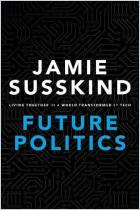Melden Sie sich bei getAbstract an, um die Zusammenfassung zu erhalten.

Melden Sie sich bei getAbstract an, um die Zusammenfassung zu erhalten.
Miles Brundage, Shahar Avin, Jack Clark, Helen Toner, Peter Eckersley, Ben Garfinkel, Allan Dafoe, Paul Scharre, Thomas Zeitzoff, Bobby Filar, Hyrum Anderson, Heather Roff, Gregory C. Allen, Jacob Steinhardt, Carrick Flynn, Seán Ó hÉigeartaigh, Simon Beard, Haydn Belfield, Sebastian Farquhar, Clare Lyle, Rebecca Crootof, Owain Evans, Michael Page, Joanna Bryson, Roman Yampolskiy and Dario Amodei
The Malicious Use of Artificial Intelligence
Forecasting, Prevention, and Mitigation
Malicious AI Report, 2018
Was ist drin?
How dangerous can artificial intelligence become?
Recommendation
In 2018, artificial intelligence (AI) technology is advancing at a dizzying speed. Hopes that self-driving cars will soon make roads safer and daily commutes more pleasant come with the possibility that, for example, terrorists can program these same vehicles to run over people. A group of 25 leading AI researchers and scholars in the new field of existential risk research have put together a comprehensive overview of the threat landscape in the age of AI. Although the threat is real, if researchers and policy makers work together to prevent possible misuses, they can prevent AI from becoming a new Frankenstein. For policy makers, political activists, managers and employees of tech companies, and AI researchers, getAbstract believes this timely and important overview is a must-read.
Summary
About the Authors
The contributing authors are researchers from several US- and UK-based universities and private institutes, including OpenAI, the Electronic Frontier Foundation and the Center for a New American Security.





















Comment on this summary